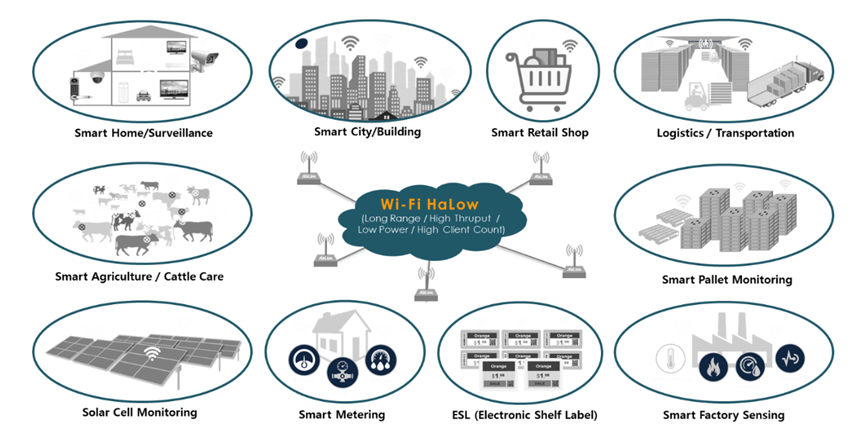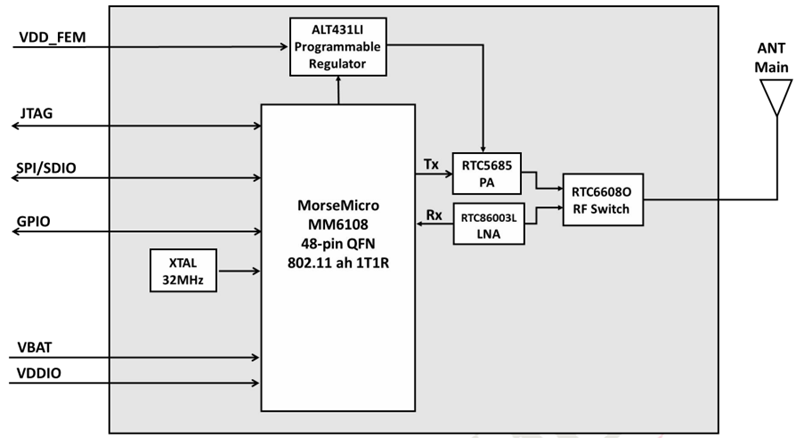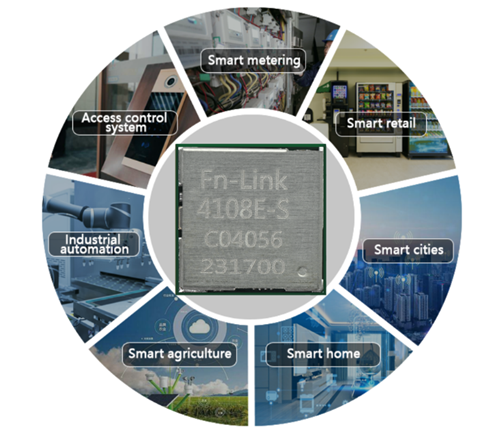WIFI HaLow Technology Leads Smart Interconnection, Breaking Communication Limits
Over the past decade, WIFI technology has established an extensive network in homes and businesses, connecting billions of smart interconnected devices and facilitating the rapid transmission of information. However, current WIFI standards face challenges, including limitations in protocol range and overall functionality, making communication at longer distances difficult and thereby restricting the potential formation of a truly interconnected ecosystem for smart devices.
To meet the demands of low-power IoT clients and accelerate innovation in IoT applications, WIFI HaLow technology has emerged based on the IEEE 802.11ah standard. In comparison to traditional WIFI, WIFI HaLow can connect up to 8,192 IoT devices at greater distances and lower power consumption through a single wireless access point (AP). The introduction of this technology holds the promise of breaking the limitations of communication distance, creating broader possibilities for the interconnection of smart devices.

QOGRISYS Technologies' latest release, the WIFI HaLow module 4108E-S, powered by the Morse Micro MM6108 chip, represents a significant innovation in the wireless communication domain. The introduction of this module is set to provide a more robust and efficient connectivity solution for IoT applications. Widely applicable across various scenarios such as smart cities, access control systems, smart agriculture, intelligent retail, and smart homes, it caters to the unique requirements of these domains, offering a more stable, reliable, and secure connectivity service for a broader range of indoor and outdoor IoT applications.
The WIFI HaLow module 4108E-S boasts several notable features. Firstly, its smaller dimensions, measuring 13.0 x 13.0 x 2.1mm, meet the demand for compact modules in end-user products, effectively reducing the volume and associated deployment costs for customer products. Secondly, the module supports a variety of peripheral interfaces, including SDIO 2.0 and SPI mode operations. Additionally, it provides versatile interfaces such as a universal I2C interface, UART interface, GPIO interface, offering users greater flexibility for seamless integration into various application scenarios.

The 4108E-S MODULE demonstrates outstanding coverage performance, operating in the Sub-1GHz frequency band with exceptional penetration capabilities that effectively reduce signal interference, enabling extensive coverage over long distances. This module can reliably connect IoT devices within a range of one kilometer, with coverage distances even surpassing traditional Wi-Fi by several times. Its remarkable signal penetration capability also aids in overcoming structural obstacles, providing a more reliable connection.
Moreover, the 4108E-S MODULE features lower power consumption, operating in the 902-928MHz frequency band, supporting selectable 1/2/4/8MHz channel bandwidths, accommodating data throughput ranging from 3.333 Mbps to 32.5 Mbps. This allows devices to operate for extended periods in low-power mode, significantly reducing the need for recharging or battery replacement.
In terms of security, the 4108E-S MODULE offers multiple layers of security features, including encryption (AES), hash algorithms (SHA-1/SHA-2), protected management frames (PMF), and open encryption (OWE), ensuring the confidentiality and integrity of wireless communication. This makes the 4108E-S MODULE an ideal choice for various scenarios, especially in environments with higher security requirements, providing a reliable wireless communication solution.

QOGRISYS Technologies' WIFI HaLow module 4108E-S has successfully hit the market, with a primary focus on the North and South American markets. As the Internet of Things (IoT) continues to evolve and diversify, QOGRISYS Technologies is committed to ongoing innovation, increased research and development investments, and enhanced product performance. This gradual effort aims to propel the IoT into a new era characterized by scalability, security, low power consumption, and remote capabilities. This signifies that users will be able to apply WIFI HaLow technology more widely and reliably, bringing advanced connectivity solutions to various IoT scenarios.






